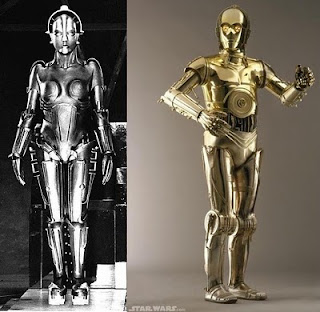AMERICAN GRAFFITI (1973)
Our latest entry from guest writer Peter Fey....
 |
| Photo by Chris Mich. |
Hang on. Do you know the 33-1/3 series books that highlight classic albums? Some talk about musical theory, some explore recording details, some consider cultural impact. Fair warning: these next few paragraphs will be more akin to the latter, although the impact is of a more personal nature. You've gotten this far, so you likely know tidbits and anecdotes about the film. If you don't, visit its Wikipedia page. Or hit the library and read The Cinema of George Lucas--there's a great section in there about it.
In 1973 I was 11 years old. I had just begun to take an interest in popular music. That year I had discovered the Beatles. Family friends had the Red and Blue 8-tracks, and I would listen to them over and over when we visited. A Hard Day's Night ran every day for a week on a local UHF station. I used our Panasonic cassette recorder to capture the dialog and music. As my father drove us to see this new film, Ringo Starr's new version of "You're Sixteen" came on the radio. About midway through dad said "I bet this song will be in the movie." Sure enough, it was. How cool when it emanated from the magnificent rock-and-roll canvas that permeated--and situated--the film. (But I still prefer Ringo's version.) So there's the first hook in me: the soundtrack. The folks got me the vinyl: a magnificent, two-LP gatefold package with stills and even a few audio excerpts amongst the songs. (Another conceit that I still favor in soundtrack albums.) Dad even scored a poster of the cover for me. Don't know where he got it, but it hung in my room for years.
 |
| The extended cover of the American Graffiti soundtrack record. Photo by Peter Fey. |
 |
| Photo montage inside the American Graffiti soundtrack record sleeve. Photo by Peter Fey. |
Remember, I'm 11 watching this night unfold, but I had an immediate crush on Laurie Henderson, which was immediately supplanted by carhop Budda, which was temporarily forgotten when Debbie strolled onto the screen. And let's not forget sock hop confidante Peg. There was even something appealing about Carol, Milner's unwanted sidekick who was closer to my age. So. Many. Cute. Girls. And then...the Blonde. Curt's paramour and, as later screenings revealed to me, the one, um, knowing female in the film. There was something different about her on a, um, primal level.
American Graffiti represented a nexus that 11-year-old me was approaching. The intersection of music, cars, and girls. Even then I knew that. Maybe that's why when we got home I slicked my hair, put on jeans and a white tee, got a pack of my dad's cigarettes and rolled it up in my left sleeve. I was Milner. (As reality would later reveal, I was actually somewhere between Toad and Curt. And I'm fine with that.)
 |
| Liner notes in the soundtrack album. Photo by Peter Fey. |
This entry was written by Peter Fey.
Peter Fey is a lot of things and someday he may pick one of them and stick with it. Songwriter, most likely.
Reference Links mentioned in this entry:
Wikipedia Page for American Graffiti:
https://en.wikipedia.org/wiki/American_Graffiti
Amazon Link to The Cinema of George Lucas:
https://www.amazon.com/Cinema-George-Lucas-Marcus-Hearn/dp/0810949687


That was fun. Thanks for the opportunity, Chris!
ReplyDelete